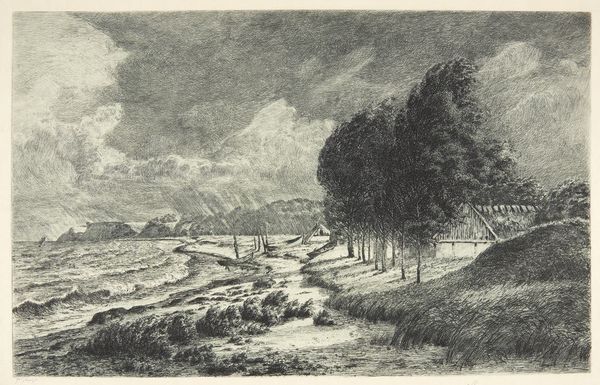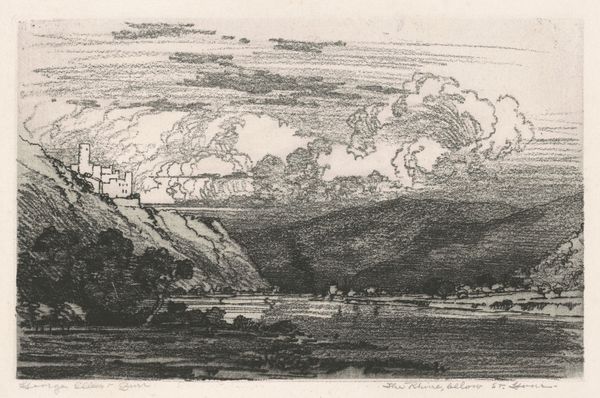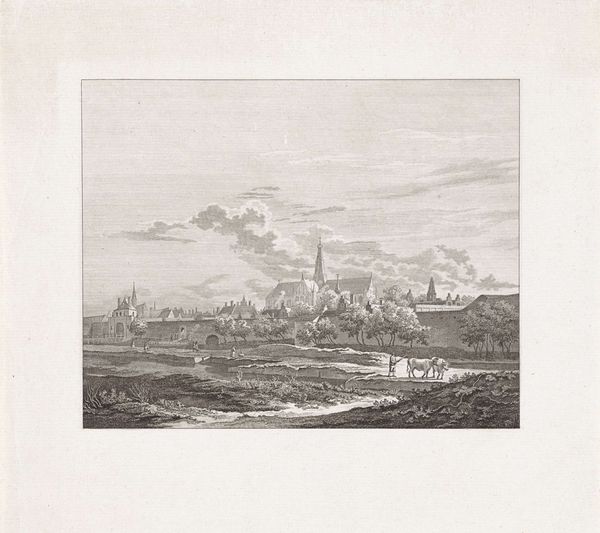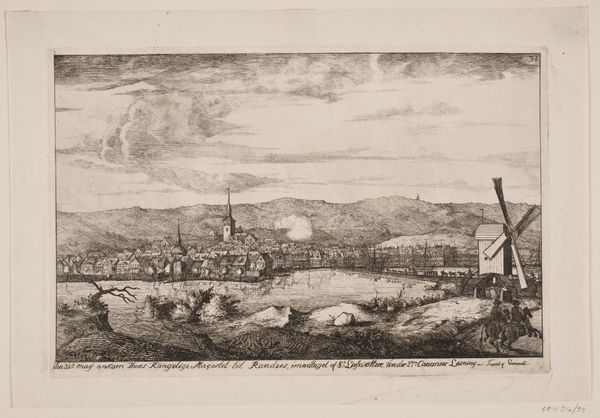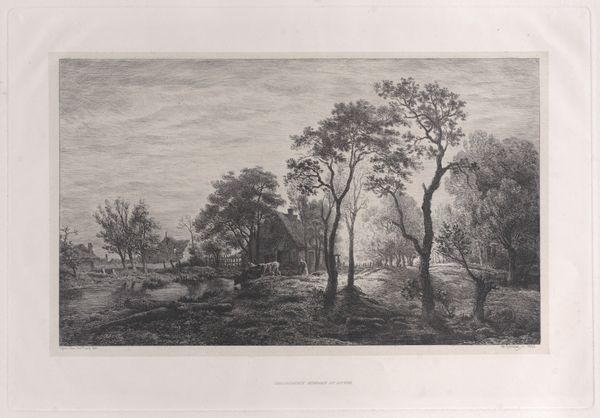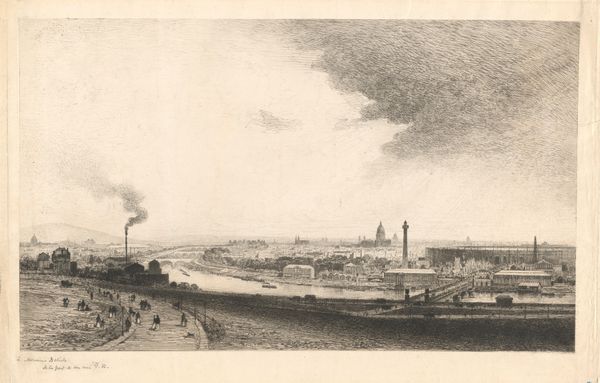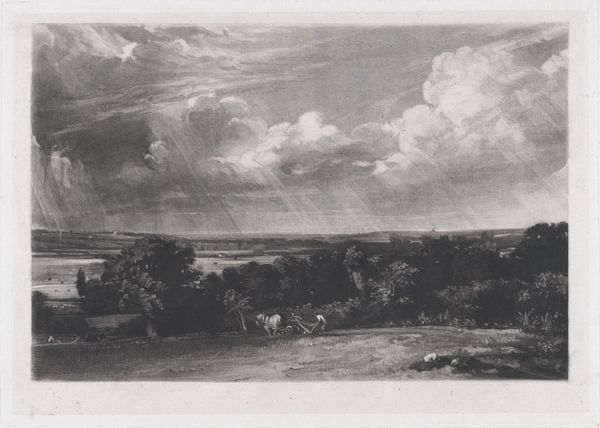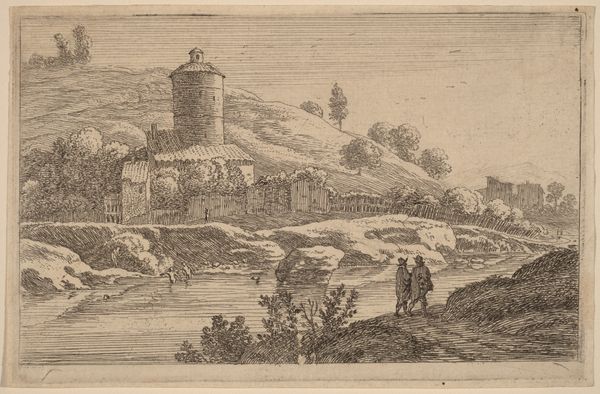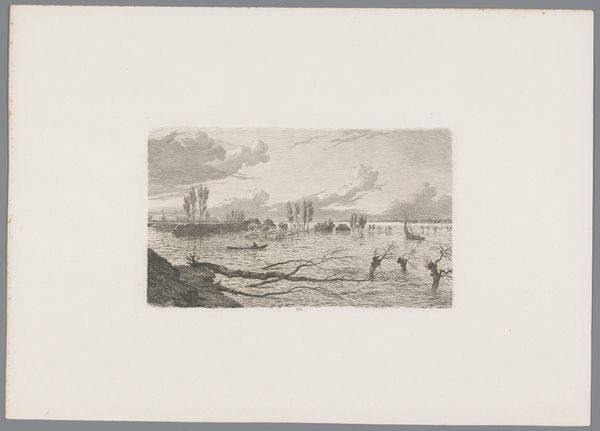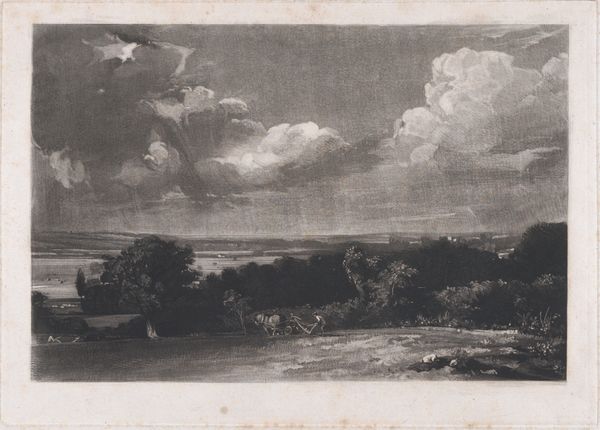
print, etching, charcoal
# print
#
etching
#
landscape
#
charcoal drawing
#
nature
#
charcoal
#
surrealist
#
realism
Dimensions: plate: 19.9 x 25 cm (7 13/16 x 9 13/16 in.) sheet: 27.3 x 34 cm (10 3/4 x 13 3/8 in.)
Copyright: National Gallery of Art: CC0 1.0
This is Verde River, Apache Reservation, Arizona, an etching made by George Elbert Burr. Etching is an indirect method of printmaking. A metal plate, often copper, is coated with a waxy, acid-resistant material called a ground. The artist then scratches an image into the ground with a pointed tool, exposing the metal. The plate is then immersed in acid, which bites into the exposed lines, creating recessed grooves. Once the ground is removed, ink is applied to the plate, filling these grooves. The surface is wiped clean, and the print is made by pressing paper against the plate, transferring the ink. Burr mastered the complex and laborious etching process and in this landscape scene, we see how he controlled the depth and thickness of the etched lines to create a remarkable range of tonal values and textures. Notice the velvety blacks, the subtle greys, and the stark whites. Each shade results from the depth and density of etched lines on the plate. By understanding the materials and meticulous process involved, we appreciate not just the image, but the labor, skill, and artistry embedded within.
Comments
No comments
Be the first to comment and join the conversation on the ultimate creative platform.
